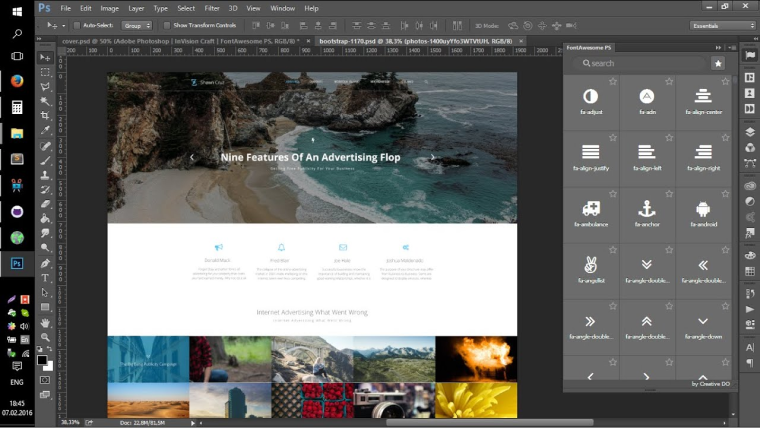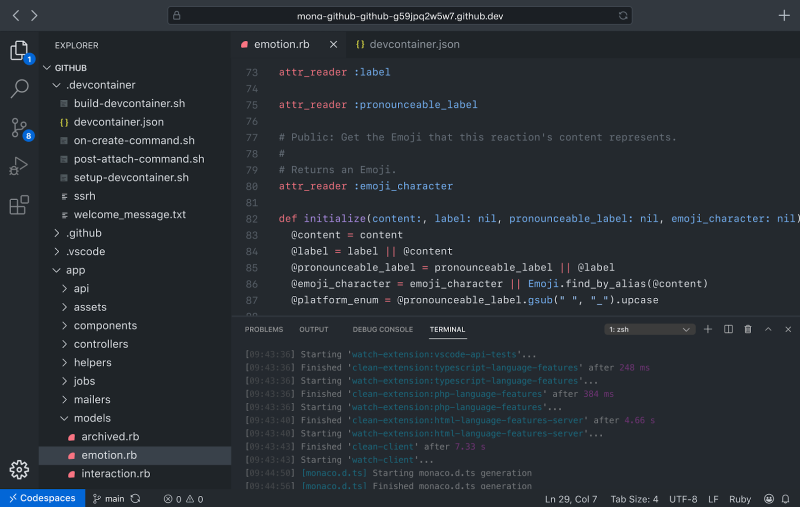Learning the difference between a web designer and a web developer is critical, especially when hiring for these roles in your start-up. While some skills and tasks between the designer and developer overlap, the difference between the two roles is as clear as night and day.
When setting up a website, you have to know when to get a designer, a developer, or both. Knowing the difference between the two roles will help you define your needs more clearly. Well-defined requirements will also help your recruiter develop an effective talent sourcing strategy and locate the best available resources.
Let’s take a deep dive into web designer vs. web developer differences.
What is Web Design?
Web design is concerned with how the website functions and appears on the front end. It’s how a website looks, feels, and delivers the desired user experience that your brand should evoke to the end-user. It deals with a website’s color scheme, embedded media such as photos and videos, and shapes, among other things.
A web designer’s job is to effectively deliver the brand message and showcase the service through the company’s website. They’re responsible for ensuring optimal user experience and SEO using imagery, colors, and graphics. Web designers should also see that visitors can feel the brand personality through the website.
An important note to remember is that not all web designers are necessarily copywriters, video editors, or photographers. You may need to outsource the respective roles for creating copy and media assets to be used by your website.
What is Web Development?
Web development deals with putting together the visual ideas of the web design through code.
Web development is the engine that brings the website wireframe to life. It sees to it that the website’s basic actions function as intended (i.e., add to cart, subscribe to an email list, etc.) and develops the critical systems on the back-end to properly gather data from the end-user.
Web development is a broader discipline than web design. It could be split into two disciplines:
- Front-end development ensures that everything runs smoothly on the user’s part. That means seeing that buttons perform their intended functions, animations, and pop-ups queue on time, and links bring the user where they need to go.
- Back-end development ensures everything runs smoothly for the website’s backend – the part clients can’t see. That deals with data-gathering systems, databases, and adequately integrating back-end employee-used software. That benefits your sales personnel, account executive, and data analyst.
Some developers are well-versed in both front-end and back-end web development. These are called full-stack developers.
Web Designer Vs. Web Developer: Major Differences
A web designer and web developer’s tasks may overlap, but the two terms are not the same. Here are some of the differences between web designer vs. web developer differences.
Coding requirement
For a web designer, learning how to code is optional. Web designers can still use no-code builders such as Elementor to create functioning websites and landing pages. But some web designers know how to use programming languages such as HTML, CSS, and Javascript to create functioning animations as mock-ups for web developers.
However, knowing how to code is an absolute necessity for a web developer since they’re responsible for bringing a website wireframe to life. Web developers build the front-end experience, but they’re also programming the necessary systems for the website to gather needed data.
Besides HTML, CSS, and Javascript, web developers should also possess knowledge of server-side programming languages such as Python, Ruby, C#, and NodeJS.
Visual appeal vs. website functionality
Web designers are more concerned about a website’s visual appeal and UX/UI. They build an optimal interface for your visitors and lead them to a desirable action. Here are some metrics that web designers improve:
- Lower bounce rate
- Longer session times
- Email opt-ins
- Pageviews per session
- Purchase
On the other hand, web developers see that the website functions as intended. They also have a hand in the metrics mentioned above, but they have a more direct influence on:
- Page load speed. The speed at which your entire website fully loads.
- Error rate. The rate of unsuccessful requests to the total number of requests. A higher error rate means fewer processed requests on your website.
- First Contentful Paint (FCP). The time it takes for browsers to paint text or images from your page.
- First Meaningful Paint (FMP). The time it takes for browsers to paint the most important parts of your website.
- Time To Interactive (TTI). The amount of time it takes before your website can be interacted with.
- Uptime. The duration your website is up and live.
The metrics above are critical KPIs for website response time and functionality. Optimized code, hosting, and server programming can help fix anomalies in these metrics – something a web developer is well-versed in.
Creativity and technicality
How the minds between a web designer and a web developer also vastly differ. Though they both work to create a website for your company, how they go about it is very different.
Web designers tend to be more oriented toward creativity. They’re more concerned with the art and style of how your website will appear, what colors and shapes are needed to communicate your branding and things of that nature. Their minds enter an artist’s domain – creating art on a blank digital canvas for potential visitors.
On the other hand, web developers are more systems- and technical-driven. They’re more concerned about how a website functions (if it functions) and what the necessary lines of codes are to obtain those functions. Their minds enter an engineer’s domain – developing programs and systems to deliver the necessary user input and data from the back-end. A good web developer may also have SEO certificates for technical SEO.
Tools and Software
Some web designer vs. web developer similarities may include a shared knowledge of HTML, CSS, and Javascript. But they could not be any more different despite those.
Just as an artist favors oil and canvas and a mechanic his trusty toolbox, a web designer and web developer have different tools.

A web designer’s computer setup must consist of a dedicated graphics card, any four or more-core processor, at least 16gbs of RAM, and a 2K or more monitor with 100% color accuracy. This setup is recommended for creative work such as graphic design, video editing, and web design.
Software used by web designers doesn’t differ much from what graphic designers use. Web designers can design wireframes in Photoshop or InDesign. If they’d like to incorporate moving elements, they may use Flash, Premiere, or After Effects.

Web developers’ hardware needs are also different from web designers. One key difference is that their monitor should prioritize resolution over color accuracy. That is so that they can see more of their code at a glance.
Web developers rarely touch the Adobe Creative Suite. Instead, many web developers build their code on GitHub. That is where they collaborate with other team members as well. Web developers also build websites on WordPress and libraries on jQuery and NumPy.
Web Designer/Developer Hybrid
Some web designers have learned how to code, and some developers have learned to design. It’s not impossible, considering that they both contribute to the same goal – creating a website despite differing skill sets.
A web designer/developer hybrid can conceptualize a website, design it, and code it to life. Their well-roundedness makes them very sought-after in the industry.
Depending on the size of your company and the expected capacity and complexity of your website, you can hire one person to design and develop your site. Remember that just because one person can do it all doesn’t mean they should. You’d still want to respect business hours and ensure a reasonable workload for them.
If you can find a web designer/developer hybrid, you should make them oversee your site’s development and performance.
Wrapping Up
There are many web designer and web developer differences. A web designer builds the website wireframe – deciding on its layout and color palettes and ensuring an optimal website UX/UI. A web developer manages your site’s coding and back-end systems development, bringing the wireframe to life.
Web designers don’t need coding knowledge, but web developers do. Web designers tend to be more creative, concerning themselves with a website’s visual appeal. Web developers tend to be more technical, concerning themselves with the systems that make a website functional.
Web designers use creative tools such as the Adobe Suite, whereas web developers use developer tools like GitHub, WordPress, and NumPy. There are also web developer/designer hybrids that can do both the work of a designer and a developer.
Now that you know the difference between a web designer and a web developer, you’ll be better positioned to know which one you need for your business.

